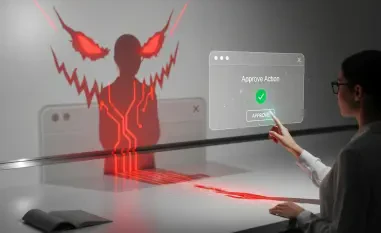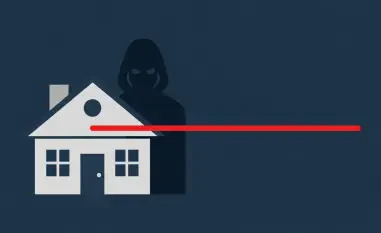The cybersecurity landscape is evolving at an unprecedented pace, driven by the increasing sophistication of cyber threats and the growing volume of security alerts. Traditional Security Operations Centers (SOCs) are struggling to keep up, leading to alert fatigue and missed detections. In response, companies like Prophet Security are pioneering the use of AI SOC Analysts to transform threat management and enhance security operations. By leveraging advanced technologies, including artificial intelligence and machine learning, these AI-driven assistants offer the scalability and efficiency needed to manage the ever-growing complexity of cyberattacks.
As the threat landscape continues to evolve, maintaining robust cybersecurity becomes more critical for organizations of all sizes. Traditional SOCs, which rely heavily on manual processes, can no longer keep pace with the speed and sophistication of today’s cyber threats. This shift necessitates a transformative approach to threat management—one that automates repetitive tasks and enables human analysts to focus on higher-level security challenges. AI SOC Analysts embody this new paradigm, providing real-time responses to security alerts, continuously learning and adapting to new threats, and operating around the clock without the need for constant human intervention.
The Challenge of Alert Fatigue in Traditional SOCs
Security Operations Centers are inundated with a staggering number of alerts daily, many of which are false positives. This phenomenon, known as alert fatigue, overwhelms SOC teams, making it difficult to identify genuine threats amidst the noise. The sheer volume of alerts generated by numerous security tools can paralyze even the most well-equipped SOCs, leading to critical threats being overlooked. As sophisticated cyberattacks increase in frequency and complexity, the task of managing and prioritizing these alerts becomes even more daunting, stretching SOC resources to their limits.
Traditional SOC methods rely heavily on manual processes, which are not only time-consuming but also prone to human error. Analysts spend countless hours triaging and investigating alerts, often with limited success. This inefficiency is exacerbated by the increasing complexity and speed of modern cyber threats, which outpace the capabilities of manual processes. The manual approach not only slows down the detection and response times but also creates substantial risk gaps, providing attackers with the opportunity to inflict significant damage before being detected and mitigated.
In such an environment, the mental and physical toll on SOC analysts cannot be overstated. The constant barrage of alerts and the pressure to quickly and accurately triage them can lead to burnout, further diminishing the effectiveness of SOC operations. The high attrition rates within SOC teams are a testament to the unsustainable nature of traditional methods. To address these challenges, a paradigm shift is necessary—one that leverages the power of AI to automate the tedious aspects of threat management, thereby reducing alert fatigue and enhancing the overall efficiency of security operations.
The Inefficiency of Manual Processes in Modern Cybersecurity
Manual processes in traditional SOCs are inadequate for addressing the scale and sophistication of contemporary cyber threats. Cyber attackers are leveraging advanced technologies, including AI, to launch more sophisticated and frequent attacks. In contrast, SOC teams relying on manual methods are left struggling to keep up, resulting in significant risk gaps. The limitations of manual processes are evident in metrics such as Mean Time to Detect (MTTD) and Mean Time to Respond (MTTR), which remain high in many organizations. These delays can have severe consequences, allowing attackers to inflict more damage before being detected and mitigated. The need for a more efficient and effective approach to threat management is clear.
Moreover, the reliance on manual processes creates bottlenecks within the SOC. Analysts are often overwhelmed by the sheer volume of alerts, leading to slower response times and higher chances of oversight. The inherent limitations of manual methods also mean that analysts spend a disproportionate amount of time on low-value tasks, such as sifting through false positives, rather than focusing on high-priority threats. This misallocation of resources not only hampers the SOC’s overall effectiveness but also leaves the organization vulnerable to undetected breaches.
The inefficacy of traditional methods becomes even more pronounced when considering the dynamic nature of cyber threats. Attackers are continuously evolving their tactics, techniques, and procedures (TTPs), making it challenging for manual processes to keep pace. The static nature of predefined playbooks and response protocols further exacerbates this issue, as they may not be adaptable to emerging threats. In contrast, AI-driven solutions, with their ability to learn and adapt in real-time, offer a more viable and proactive approach to cybersecurity.
The Emergence of AI SOC Analysts
AI SOC Analysts represent a transformative approach to cybersecurity, automating the tedious and repetitive tasks associated with triaging, investigating, and responding to security alerts. These AI-driven assistants leverage technologies such as Machine Learning (ML) and Large Language Models (LLMs) to dynamically create and execute investigation plans, significantly enhancing the efficiency of SOC operations. By continuously learning from new data and threat patterns, AI SOC Analysts can adapt to evolving threats, providing organizations with a robust and scalable solution for modern cybersecurity challenges.
Unlike traditional SOAR tools, which are static and require significant upfront efforts, AI SOC Analysts offer dynamic, real-time responses with minimal initial investments. They operate independently around the clock, providing continuous monitoring and response capabilities without the need for constant human intervention. This shift allows human analysts to focus on higher-level, impactful security activities. For instance, while the AI handles routine alert triage, human analysts can dedicate their expertise to strategic tasks such as threat hunting and incident response planning. This collaborative approach not only enhances the efficiency of SOC operations but also improves overall job satisfaction and reduces analyst burnout.
The integration of AI SOC Analysts into security operations marks a significant advancement in the fight against modern cyber threats. By automating laborious tasks, AI SOC Analysts free up valuable time and resources, enabling SOC teams to focus on more strategic and high-impact activities. This transformation is crucial for staying ahead of increasingly sophisticated cyber attackers and maintaining a robust security posture. Moreover, the ability of AI SOC Analysts to operate around the clock ensures continuous protection, further enhancing the resilience of an organization’s cybersecurity defenses.
Comparative Analysis: SOAR Tools vs. AI SOC Analysts
While traditional SOAR tools have been instrumental in automating certain aspects of security operations, they come with limitations. SOAR tools are often static, requiring extensive initial setup and ongoing maintenance. They also depend heavily on predefined playbooks, which may not be adaptable to evolving threats. In contrast, AI SOC Analysts offer a more dynamic and flexible approach. They continuously learn and adapt to new threat vectors, providing real-time responses that evolve with the threat landscape. This adaptability is crucial in maintaining robust cybersecurity in the face of increasingly sophisticated attacks. Additionally, AI SOC Analysts require minimal initial setup, reducing the time and effort needed to integrate them into existing security frameworks.
The primary advantage of AI SOC Analysts over traditional SOAR tools lies in their ability to operate autonomously and adaptively. While SOAR tools can automate predefined tasks, they lack the flexibility to respond to novel or rapidly changing threats. AI SOC Analysts, on the other hand, leverage advanced ML and LLM technologies to dynamically generate and execute investigation plans based on real-time data. This capability allows them to address both known and unknown threats more effectively, ensuring a more comprehensive and proactive security posture.
Furthermore, the continuous learning capabilities of AI SOC Analysts ensure that they remain effective over time. As they process more data and encounter new threat patterns, these AI-driven assistants refine their algorithms and improve their response accuracy. This ongoing adaptation is critical for maintaining robust cybersecurity in a constantly evolving threat landscape. In contrast, static SOAR tools require frequent updates and manual adjustments to keep pace with new threats, making them less efficient and more resource-intensive.
Integration and Adaptation of AI SOC Analysts
One of the key advantages of AI SOC Analysts is their ability to seamlessly integrate with existing security tools and workflows. This integration ensures that organizations can leverage their current investments in security infrastructure while enhancing their overall threat management capabilities. AI SOC Analysts adapt to an organization’s changing security needs through continuous learning and feedback, ensuring they remain effective over time. By working within the existing ecosystem, these AI-driven assistants optimize the use of available resources, providing a cost-effective solution for modern cybersecurity challenges.
The implementation of AI SOC Analysts also facilitates swift onboarding for new analysts, allowing them to contribute value immediately. By automating repetitive tasks, AI SOC Analysts free up human analysts to focus on more strategic and complex security challenges, improving overall team morale and reducing attrition rates. This shift in focus not only enhances the productivity of SOC teams but also creates a more engaging and rewarding work environment. The ability to concentrate on high-impact activities, such as threat hunting and incident response planning, allows analysts to develop their skills and expertise, further strengthening the organization’s security posture.
Additionally, AI SOC Analysts provide continuous monitoring and response capabilities, ensuring that organizations are protected around the clock. This 24/7 operation is particularly valuable in today’s globalized business environment, where cyber threats can emerge at any time. By leveraging AI-driven assistants, organizations can maintain a constant state of vigilance, promptly addressing security incidents and mitigating risks before they escalate. The combination of seamless integration, continuous learning, and round-the-clock operation makes AI SOC Analysts an indispensable tool for modern cybersecurity.
The Proactive Defense Mechanism of AI SOC Analysts
As cyber threats become more sophisticated, particularly with the rise of AI-generated phishing attacks, traditional methods fall short. AI SOC Analysts offer a proactive defense mechanism, capable of processing vast amounts of data and adapting to new threat vectors in real-time. This capability is crucial in maintaining robust cybersecurity and staying ahead of attackers. By continuously analyzing data and identifying patterns, AI SOC Analysts can detect and respond to emerging threats before they cause significant damage. This proactive approach not only enhances the efficiency of threat detection and response but also improves the accuracy and quality of security operations.
AI SOC Analysts not only enhance the efficiency of threat detection and response but also improve the accuracy and quality of security operations. By reducing the number of false positives and ensuring genuine threats are promptly addressed, these AI-driven assistants significantly lower the risk of successful cyberattacks. This increased accuracy is achieved through advanced ML algorithms that continuously learn from new data, refining their detection capabilities over time. The result is a more reliable and effective security posture, capable of withstanding the ever-evolving tactics of cyber attackers.
The proactive defense mechanism offered by AI SOC Analysts is further enhanced by their ability to integrate with other security tools and workflows. By working in concert with existing infrastructure, AI-driven assistants can provide a comprehensive and cohesive security solution. This integration enables organizations to leverage their full spectrum of security resources, ensuring a coordinated and effective response to cyber threats. As the threat landscape continues to evolve, the importance of a proactive and adaptive defense mechanism cannot be overstated. AI SOC Analysts represent a critical advancement in this regard, offering a robust and scalable solution for modern cybersecurity challenges.
Evaluating AI SOC Analysts for Organizational Needs
Manual processes in traditional SOCs fall short in addressing the scale and sophistication of modern cyber threats. Cyber attackers are now utilizing advanced technologies, including AI, to conduct more intricate and frequent attacks. Consequently, SOC teams that depend on manual methods struggle to keep pace, resulting in significant risk gaps.
The disadvantages of relying on manual processes are evident in key metrics such as Mean Time to Detect (MTTD) and Mean Time to Respond (MTTR), which remain unduly high in numerous organizations. Such delays can have severe repercussions, allowing attackers to cause extensive damage before detection and mitigation. The need for a more efficient, effective approach to threat management is glaringly apparent.
Additionally, manual processes create significant bottlenecks in the SOC. Analysts are often overwhelmed by the volume of alerts, leading to slower response times and increased chances of oversight. The intrinsic limitations of manual methods mean that analysts spend an inordinate amount of time on low-value tasks, such as sifting through false positives, instead of focusing on critical threats. This misallocation of resources not only diminishes the SOC’s effectiveness but also leaves the organization exposed to undetected breaches.
The limitations of traditional methods become even more evident when considering the dynamic nature of cyber threats. Attackers are continuously evolving their tactics, techniques, and procedures (TTPs), making it difficult for manual processes to keep up. Predefined response protocols and static playbooks worsen this issue since they may not be adaptable to emerging threats. In contrast, AI-driven solutions offer a more viable and proactive approach to cybersecurity, as they can learn and adapt in real-time.













